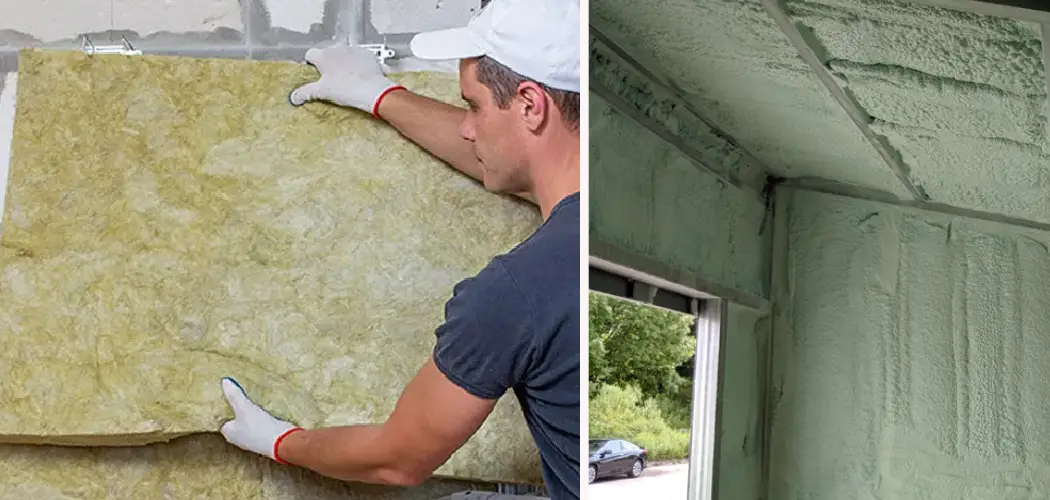One of the biggest reasons why you should learn to insulate a metal shed is for temperature control. Metal sheds can get extremely hot in the summer and very cold in the winter, making them uncomfortable to work or store items in. By properly insulating your metal shed, you can maintain a more consistent and comfortable temperature inside.
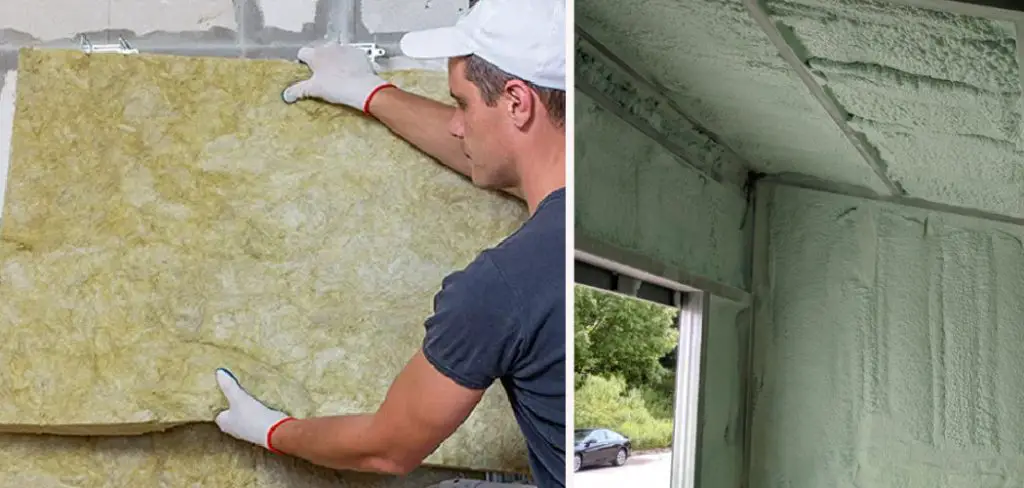
The main advantage of insulating a metal shed is that it helps to keep the inside temperature consistent. This can be especially beneficial if the shed is being used for storage or as a workspace. Insulation also helps to reduce condensation, which can lead to mold and mildew growth. In this blog post, You will learn in detail how to insulate a metal shed.
Type of Insulation to Use for a Metal Shed
Whether you are planning to use your metal shed as a workshop, storage space or even as a living area, insulation is an important aspect to consider. It helps regulate the temperature inside the shed and can also prevent moisture buildup which can cause damage over time. Here are some types of insulation you can use for your metal shed:
- Fiberglass Insulation – This type of insulation is made of tiny glass fibers and is a popular choice due to its affordability. It can be easily installed by cutting it into the desired size and fitting it between the metal framing of the shed walls and ceiling. However, fiberglass insulation can irritate skin and eyes, so proper protective gear should be worn during installation.
- Spray Foam Insulation – This type of insulation is applied using a spray and expands to fill any gaps or cracks, providing a more air-tight seal. It also has excellent soundproofing properties and can be used for both walls and ceilings of the metal shed. However, it is more expensive than fiberglass insulation and requires professional installation.
- Reflective Insulation – This type of insulation works by reflecting heat radiation and is best suited for areas with hot climates. It is made of a layer of aluminum foil laminated onto a foam board and can be easily installed using adhesive or staples. However, it may not be as effective in colder climates.
- Rigid Foam Insulation – Made from polystyrene, polyurethane or polyisocyanurate, this type of insulation provides a high R-value (a measure of thermal resistance). It can be installed on the walls and ceiling of the metal shed and is resistant to moisture. However, it is more expensive than other types of insulation.
- Bubble Wrap Insulation – This type of insulation is lightweight, affordable and easy to install. It consists of a layer of air bubbles sandwiched between two layers of foil and can be attached to the walls and ceiling using adhesive or staples. However, it may not provide as much insulation as other types.

There are many factors to consider when choosing the right insulation for your metal shed, such as climate, budget and personal preferences. Before making a decision, research and compare different types of insulation to find the one that best suits your needs. With the right insulation, your metal shed can become a comfortable and functional space for any purpose.
Step-by-step Instructions for How to Insulate a Metal Shed
Step 1: Inspect the Metal Shed
The first step in insulating your metal shed is to thoroughly inspect it for any damage or deficiencies. Look for holes, gaps, and cracks that need to be sealed before proceeding with insulation. This will ensure that your insulation efforts are effective.
Step 2: Measure the Shed
Next, you will need to measure the dimensions of your metal shed in order to determine the amount of insulation needed. Measure the length, width, and height of each wall, as well as the ceiling if you plan on insulating it as well.
There are several types of insulation materials available for metal sheds such as fiberglass, foam board, and reflective foil. Consider factors such as cost, effectiveness, and ease of installation when choosing the right insulation material for your shed.
Step 3: Prepare the Materials
Before starting the insulation process, make sure you have all the necessary materials and tools. This includes gloves, safety glasses, a utility knife, and any adhesive or sealant required for your chosen insulation material. Using the appropriate adhesive or sealant, fill any gaps or cracks in your metal shed. This will prevent air from entering or escaping and ensure that your insulation works efficiently.
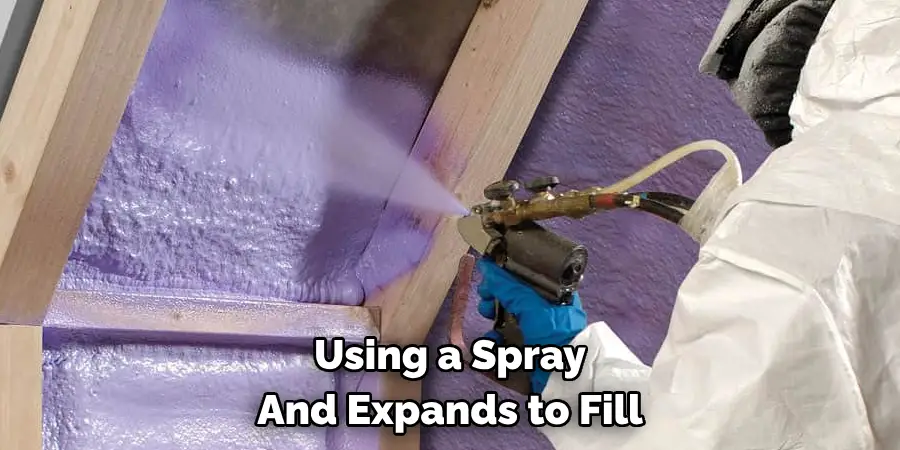
Step 4: Install Vapor Barrier (Optional)
If you live in a humid climate, it may be beneficial to install a vapor barrier before insulating your metal shed. This will help prevent moisture buildup and protect your shed from potential damage.
Following the manufacturer’s instructions, install the chosen insulation material on the walls and ceiling of your metal shed. Make sure to secure it properly, paying special attention to corners and edges.
Step 5: Seal Joints and Gaps
After insulating, seal any remaining joints or gaps with caulking or foam spray. This will help improve the overall insulation and ensure that your shed is properly sealed from external elements. Once the insulation is installed and secured, you can add any finishing touches such as drywall or paneling to cover the exposed insulation. This will give your metal shed a more finished appearance.
Step 6: Maintain Your Insulated Shed
Regularly check and maintain your insulated metal shed to ensure that the insulation is still in good condition. Seal any new gaps or cracks that may appear over time and make any necessary repairs to keep your shed well-insulated.
By following these step-by-step instructions, you can effectively insulate your metal shed and protect it from external elements. A properly insulated shed will also help regulate its internal temperature, making it more comfortable for storing items or even using as a workspace.
Safety Tips for How to Insulate a Metal Shed
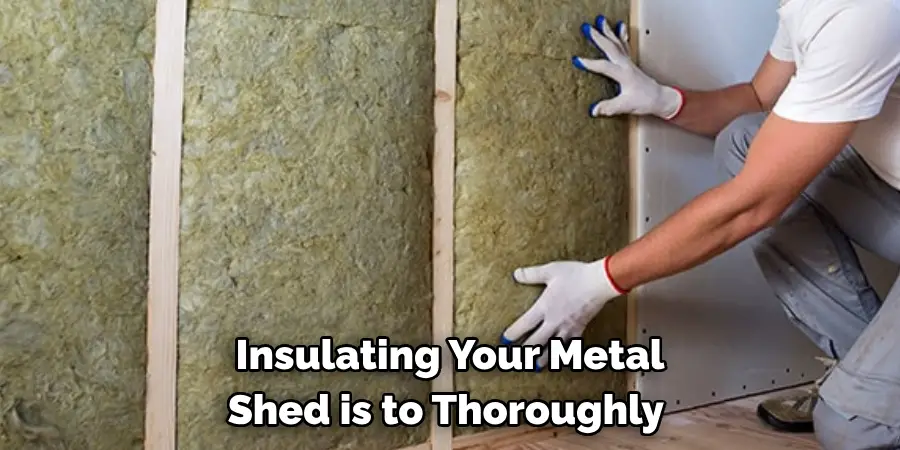
- Inspect the metal shed for any electrical wiring or pipes before starting the insulation process. If there are any, make sure to hire a professional electrician or plumber to handle them properly.
- Wear protective gear such as gloves, long-sleeved shirts, and masks when handling insulation materials. These materials can be harmful if they come in contact with your skin or if you inhale their fibers.
- Make sure to properly ventilate the shed during the insulation process. This will prevent any buildup of harmful fumes or gases, especially if you will be using spray foam insulation.
- Keep a fire extinguisher nearby in case of any accidents or mishaps while handling flammable insulation materials.
- Use caution when handling sharp tools such as knives or scissors while cutting insulation materials. Keep them out of reach of children and pets.
- Properly seal any gaps or holes in the shed walls before insulating to prevent air leaks. This will ensure that the insulation is effective and energy efficient.
- Finally, if you are not comfortable with handling the insulation process yourself, it is always best to hire a professional contractor who has experience in insulating metal sheds.
By following these safety tips, you can ensure a safe and efficient insulation process for your metal shed. Remember to always prioritize safety and seek professional help if needed. Now that you have successfully insulated your metal shed, it’s time to enjoy the benefits of a well-insulated space, such as improved temperature regulation and energy savings.
Importance of Maintaining a Balanced Environment Within the Insulated Shed
- Helps to protect stored items from extreme temperature changes and humidity levels.
- Reduces the risk of mold growth and moisture damage.
- Preserves energy efficiency by preventing heat loss or gain.
- Promotes a healthier environment for workers and visitors.
- Improves air quality by reducing dust, allergens, and other pollutants.
- Enhances the overall functionality and lifespan of the insulated shed.
- Contributes to a more sustainable and eco-friendly operation.
Maintaining a balanced environment within the insulated shed is crucial for several reasons. One of the primary benefits is protection against extreme temperature changes and humidity levels. When stored items are exposed to these fluctuations, it can lead to damage or deterioration.
Energy Efficiency and Cost Savings for Insulating a Metal Shed
Insulating a metal shed may seem like an unnecessary expense, but it can actually save you money in the long run. By increasing energy efficiency and reducing heating and cooling costs, insulating your metal shed can pay for itself over time. Here are 7 reasons why investing in insulation is a smart choice for your metal shed.
1. Reduce Energy Costs
Insulation acts as a barrier between the outside temperature and the inside of your metal shed. This means that during hot summers, insulation can help keep your shed cooler, reducing the need for air conditioning and saving you money on energy bills. In colder months, insulation can trap heat inside your shed, making it easier to warm up and decreasing heating costs.
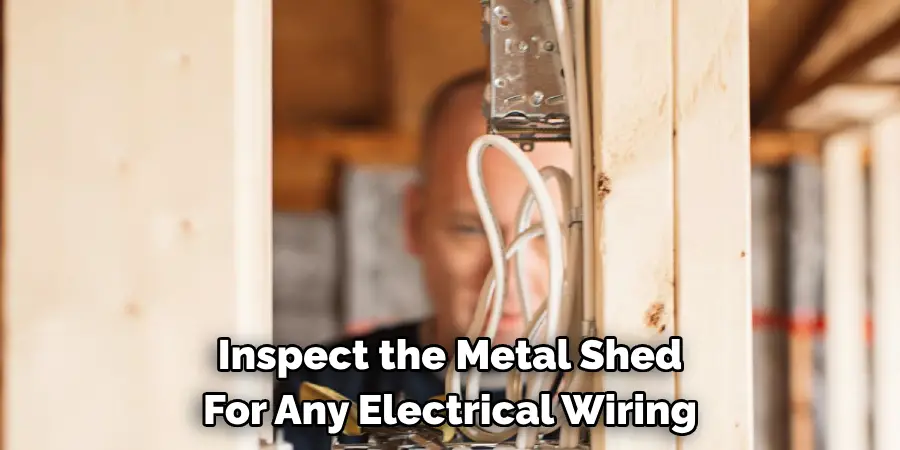
2. Protect Stored Items
Metal sheds are often used to store valuable items such as tools, equipment, and outdoor furniture. Without proper insulation, extreme temperatures can damage or even ruin these items. Insulation helps regulate the temperature inside your shed, protecting your belongings from heat, cold, and moisture.
3. Prevent Condensation
Condensation occurs when warm air meets a cold surface, leading to excess moisture buildup. This can be a problem in metal sheds, as the temperature difference between the outside and inside can cause condensation to form on walls and ceilings. Insulation acts as a barrier, preventing warm air from coming into contact with cold surfaces and reducing the chances of condensation.
4. Increase Comfort
If you use your metal shed as a workshop or for other activities, insulation can make it a more comfortable environment. By keeping temperatures stable, insulation can help regulate humidity levels and keep the air inside your shed feeling pleasant.
5. Improve Durability
Extreme temperature variations can cause metal sheds to expand and contract, leading to warping, cracking, and other damage over time. Insulation helps maintain a consistent temperature inside your shed, reducing the risk of these issues and increasing its overall durability.
6. Reduce Noise
Metal sheds can be noisy, especially during rain or hailstorms. Adding insulation can help dampen these sounds, creating a quieter environment inside your shed. This is particularly beneficial if you use your shed as a workspace or relaxation area.
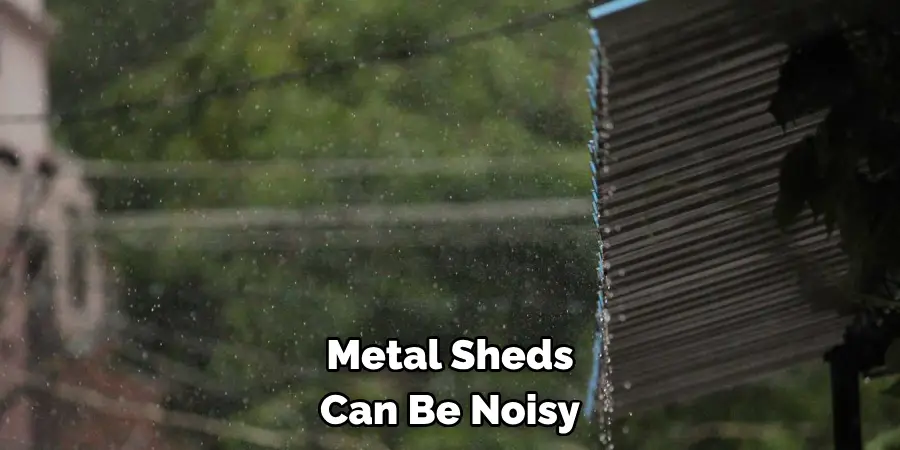
7. Easy Installation
Insulating a metal shed may sound like a complicated and time-consuming process, but it can actually be quite simple. There are a variety of insulation options available for metal sheds, including foam boards, spray foam, and reflective insulation. Many of these materials can be easily installed by the average DIYer with basic tools.
By insulating your metal shed, you not only increase its energy efficiency and reduce costs, but you also protect your belongings and create a more comfortable and durable space. With easy installation options and long-term savings, investing in insulation for your metal shed is a smart choice that will benefit you in many ways.
Long-term Benefits of an Energy-efficient, Insulated Metal Shed
1. Reduced Carbon Footprint
An energy-efficient, insulated metal shed can help reduce your carbon footprint by consuming less energy and emitting fewer greenhouse gases. This is because an insulated shed requires less heating or cooling which in turn leads to lower energy consumption.
2. Lower Energy Bills
Insulated metal sheds are designed to keep the interior temperature consistent, regardless of outside weather conditions. This means that you won’t have to use as much electricity or gas for heating in the winter or cooling in the summer, resulting in lower energy bills.
3. Better Temperature Regulation
Insulation acts as a barrier against temperature fluctuations, making an insulated metal shed more comfortable and usable throughout the year. This is especially beneficial if you plan on using your shed for storage, as it will help protect your belongings from extreme temperatures.
4. Increased Durability
Insulated metal sheds are built to withstand harsh weather conditions, which means they have a longer lifespan compared to traditional sheds. The insulation also acts as an extra layer of protection against rust and corrosion, increasing the durability and longevity of your shed.

5. Noise Reduction
The added layer of insulation in an energy-efficient metal shed can help reduce noise pollution. This is especially useful if you live in a busy or noisy area, as it will create a quieter and more peaceful environment inside the shed.
6. Versatility
An insulated metal shed can be used for a variety of purposes, such as storage, workshop, or even as an extra living space. The temperature regulation and durability of the shed make it suitable for various uses, giving you more options for utilizing your space.
7. Cost Savings in the Long Run
While an energy-efficient, insulated metal shed may have a higher upfront cost compared to traditional sheds, the long-term benefits can result in significant cost savings. With lower energy bills, increased durability, and less maintenance required, an insulated metal shed will save you money in the long run.
In addition, an insulated metal shed can also add value to your property. Its energy-efficient features and versatility make it an attractive asset for potential buyers if you ever decide to sell your property.

Conclusion
In conclusion, insulating a metal shed is an essential step for anyone looking to use their shed as more than just storage space. By properly insulating your shed, you can create a comfortable and usable space that can serve a variety of purposes. One of the main benefits of insulating a metal shed is that it helps regulate temperature and moisture levels. This means that not only will the space be more comfortable to use, but it will also protect any items stored inside from extreme temperatures and potential water damage.
Another important factor to consider when insulating a metal shed is energy efficiency. By insulating the walls, floors, and ceiling of your shed, you can reduce heat loss in the winter and keep the space cooler in the summer. This can lead to significant savings on your energy bills. I hope this article has been beneficial for learning how to insulate a metal shed. Make Sure the precautionary measures are followed chronologically.
I am Rick. I grew up helping my dad with his handyman service. I learned a lot from him about how to fix things, and also about how to work hard and take care of business. These days, I’m still into fixing things- only now, I’m doing it for a living.
I’m always looking for new ways to help people grow and develop. That’s why I have created this blog to share all my experience and knowledge so
that I can help people who are interested in DIY repair.

